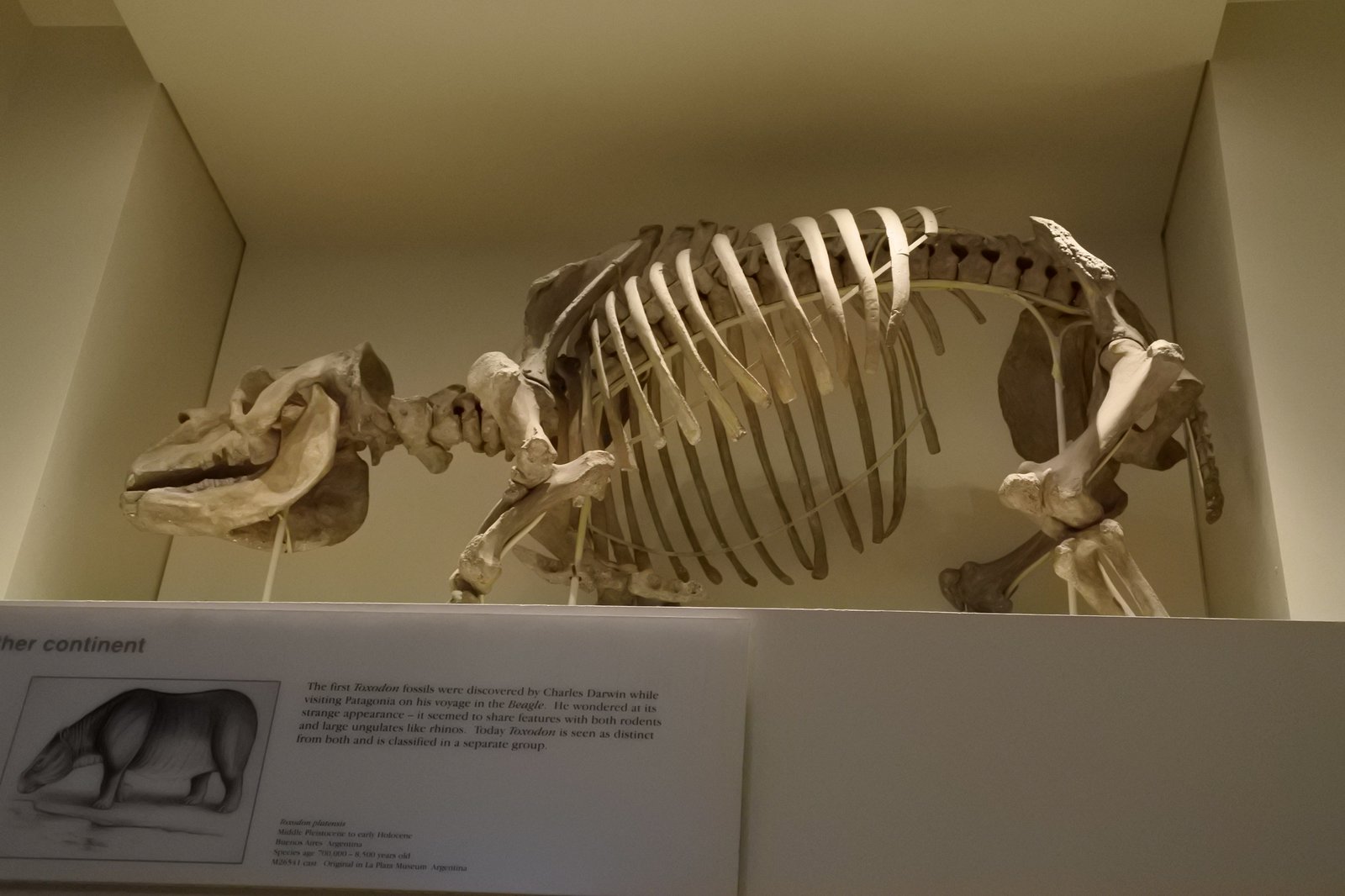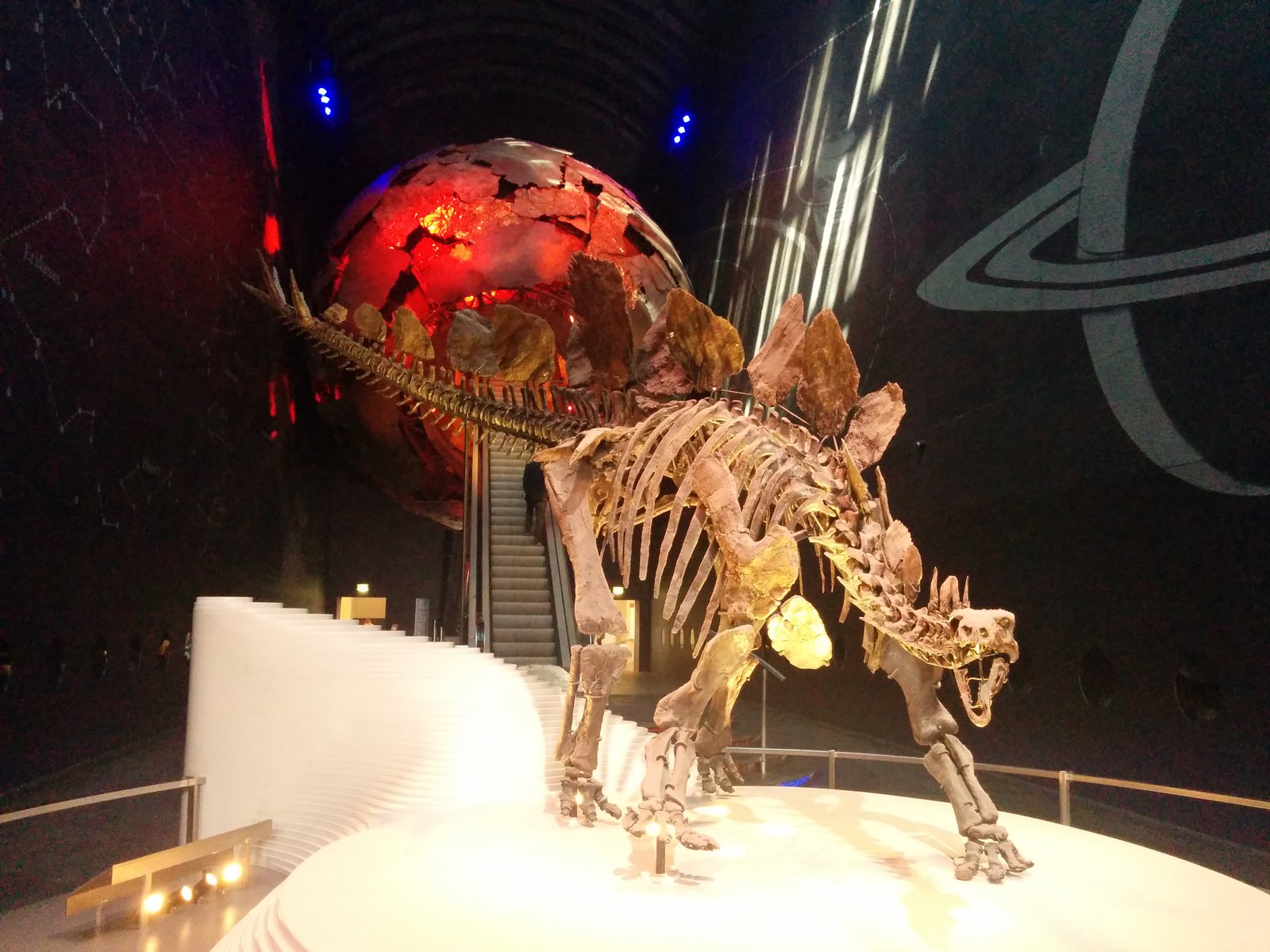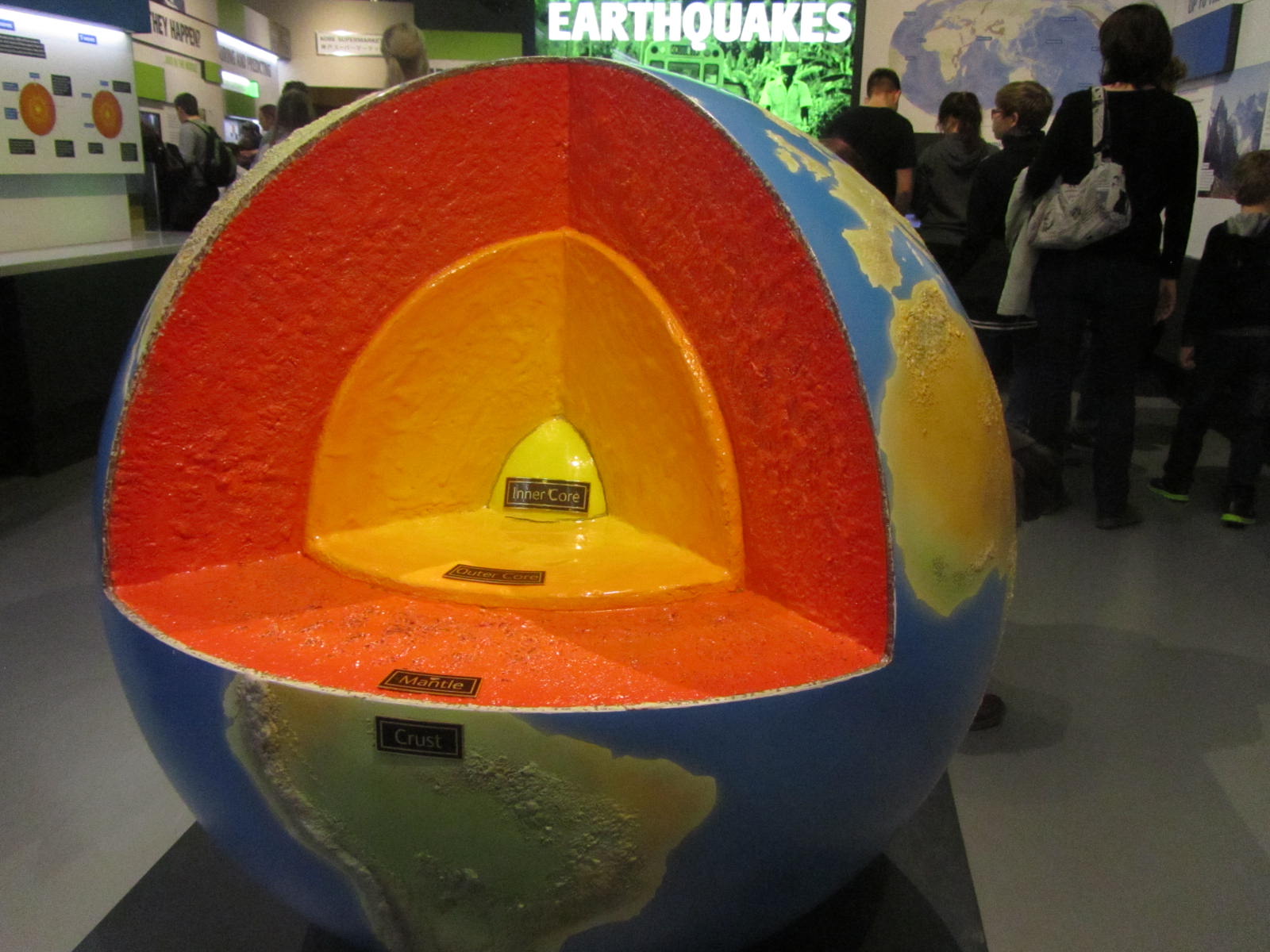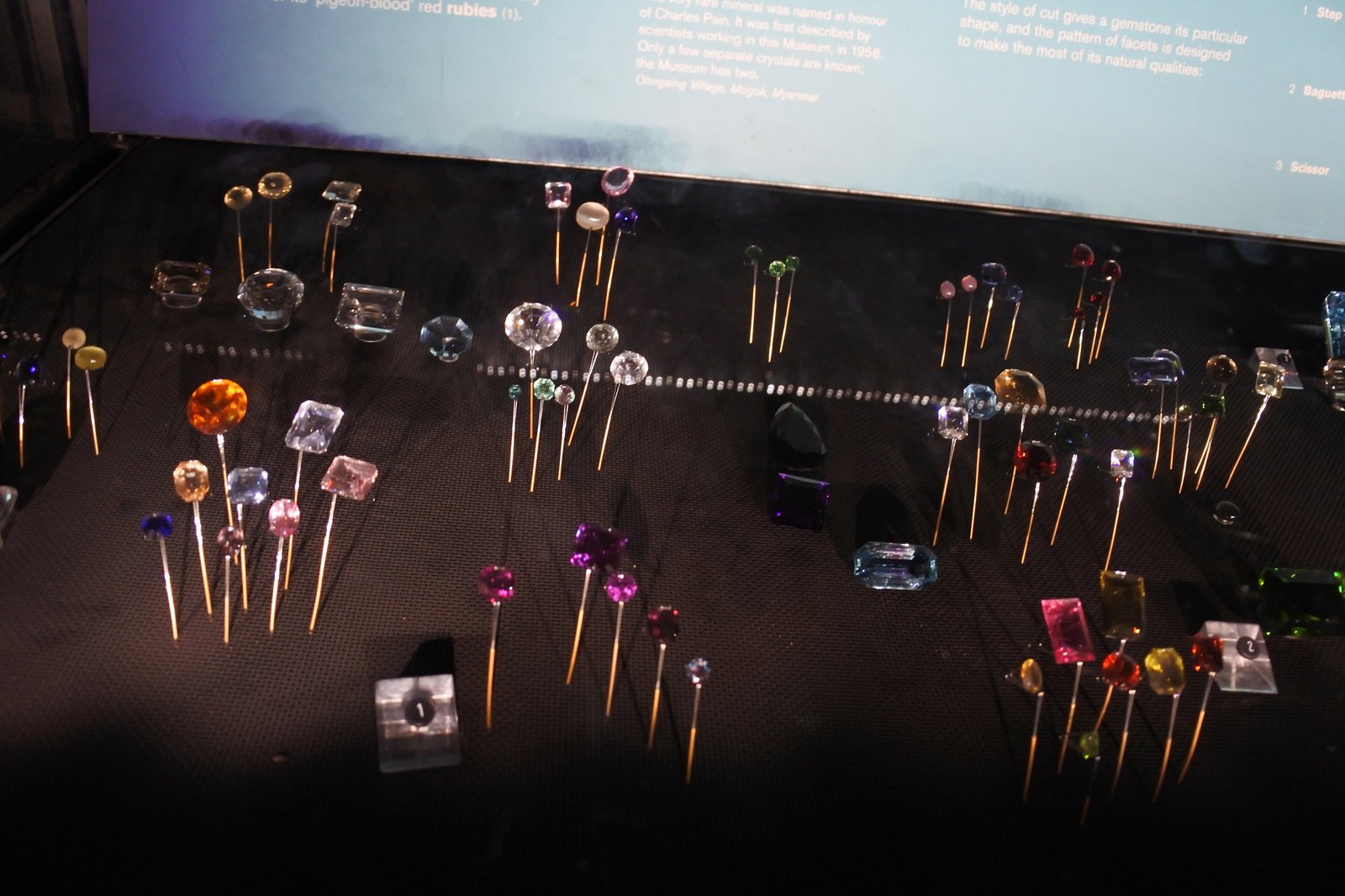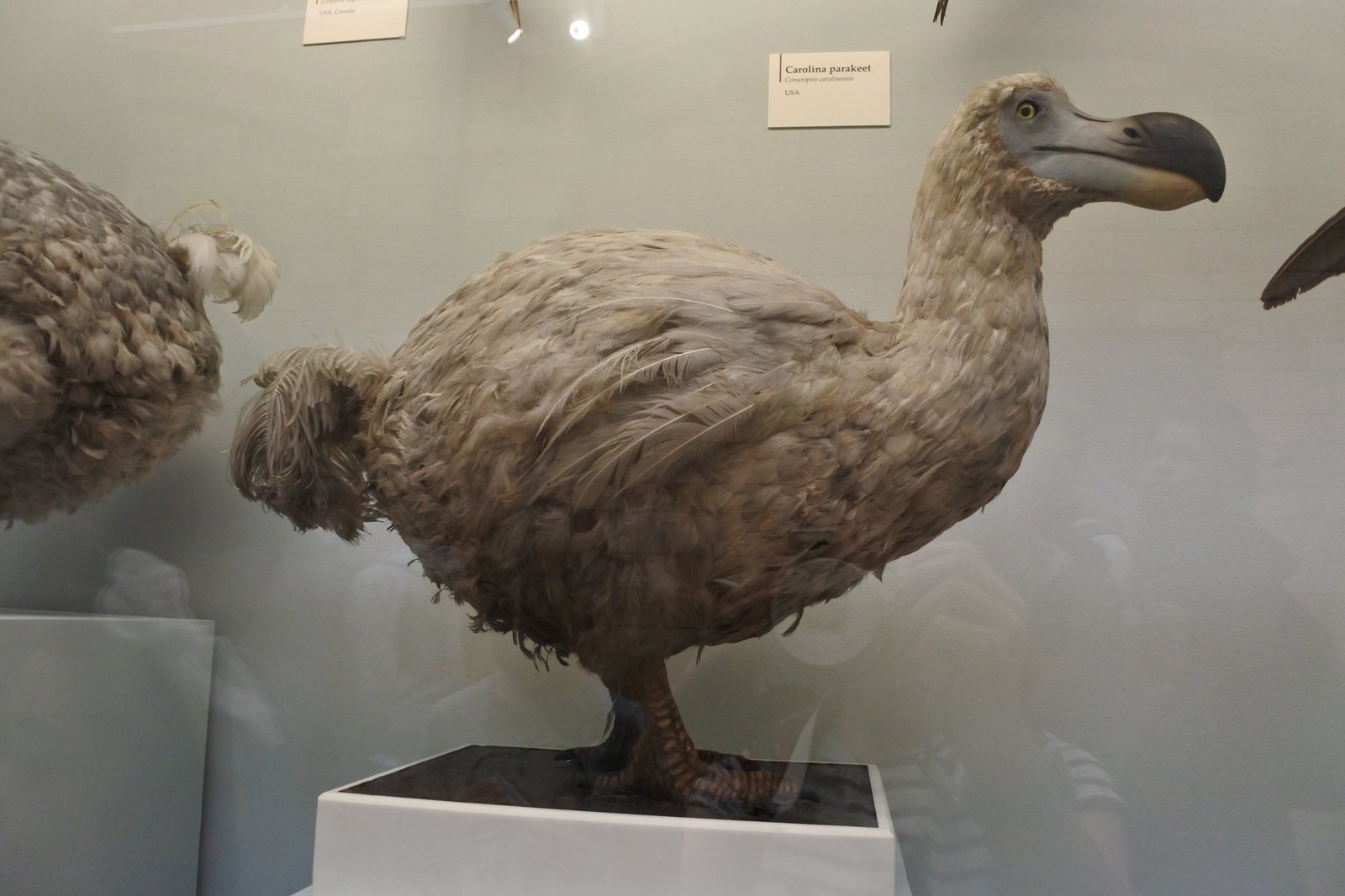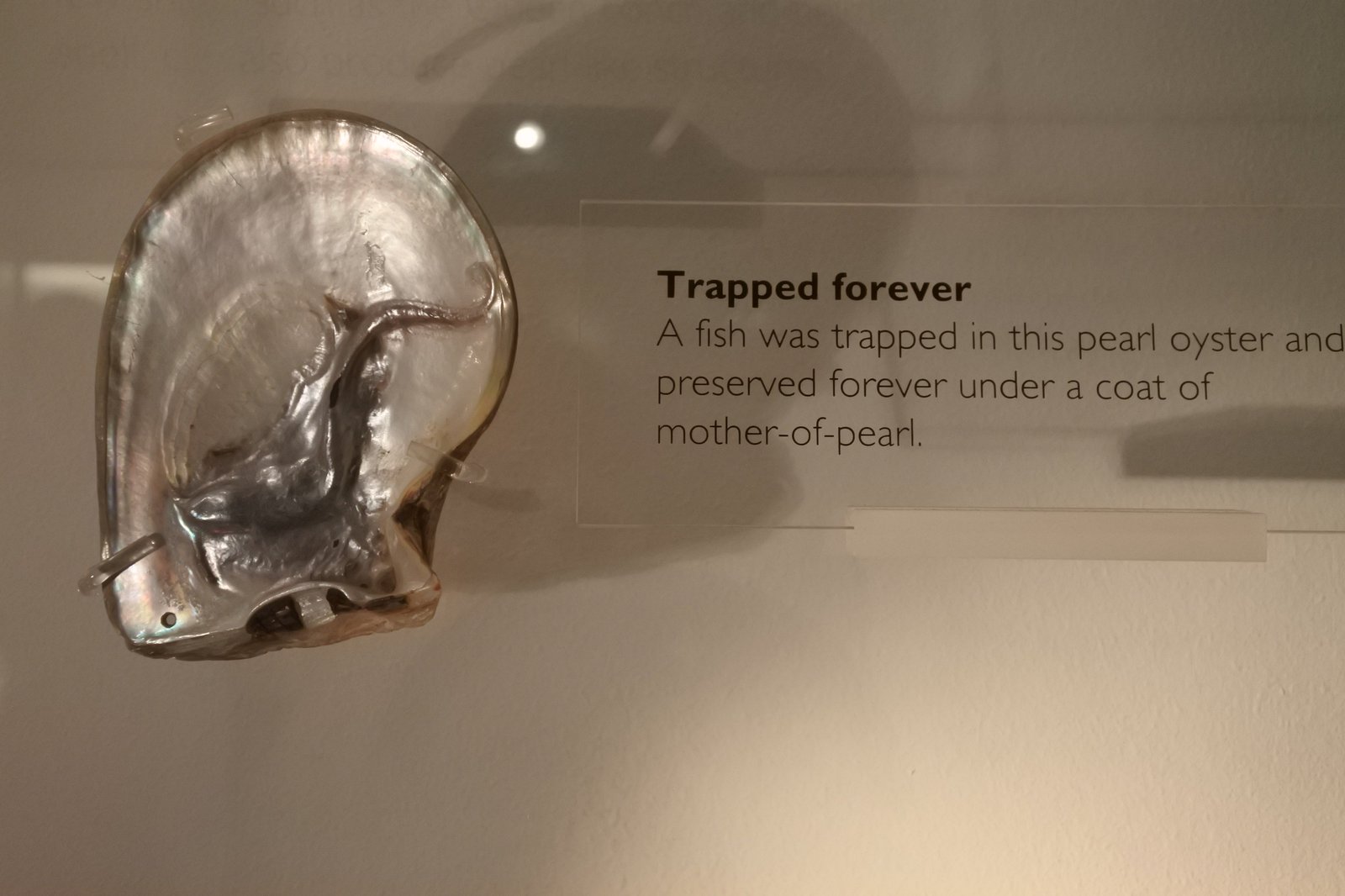
Over the Easter holidays we tasked Freya (age 9) and Finlay (age 7) to select some of their favourite places to visit at the Natural History Museum. Here are a some of the exhibits that caught their eye...
1. Entrance
Arriving in the Exhibition Road entrance of the Natural History Museum we immediately found the 'Toxodon' skeleton - a unique mammal from South America which became extinct over 8,500 years ago which looks a bit like a rhino.
2. Earth Hall
There are so many different things to see in the Museum that we decided to give the dinosaurs a break on this visit. But we did stop to admire 'Sophie the Stegosaurus' - the most intact Stegosaurus fossil skeleton ever found. She is 3 metres tall and 6 metres long and sits at the bottom of the escalators in the Earth Hall. The skeleton has over 300 bones and was found almost complete in the USA around 15 years ago and apparently she is over 150 million years old!
The Earth Hall is flanked by objects, gems and minerals on display including a 'devil's toenail', a piece of moon rock, a fossilised sting ray, rock rings and glow in the dark minerals. Taking the escalators up, we arrived in the Volcano & Eathquake Gallery.
3. Volcano & Earthquake Gallery
The gallery was really cool with lots of dramatic film footage and some interactive games, but a highlight was definitely the earthquake simulator which is a re-creation of the supermarket scene during Japan's 1996 Kobe earthquake. As the ground shakes, everything on the shelves shakes and suddenly the ground feels just like jelly - it must have been scary. You can then see how buildings are now constructed to stay up during an earthquake.
We loved watching films of lava bursting out of volcanoes and we didn't realise how many different types of volcanoes there are - you can see the pressure in the earth's core pushing the lava up to the ground which is mind blowing! There were even casts of victims from the Mount Vesuvius eruption way back in AD 79 - we decided it must be pretty scary being caught up in volcanic eruption.
4. Earth's Treasury
On the first floor we explored the Earth's Treasury which is full of crystals and rocks with beautiful patterns and colours. We found out how diamonds are formed and cut and we learnt that some minerals have different properties and some are more harmful than useful. For example lead is very soft unlike some minerals but it can be highly toxic to humans. We even saw a rock that looked like bubbles and found out that garnet has been a prized gem for over 5000 years!
5. Bird Gallery
Back down to the ground floor to see the Bird Gallery where we wandered through the Victorian gallery to see the famous Dodo which was eaten to extinction within 70 years of discovery - hungry sailors took advantage of their inability to fly. There were some interesting cabinets with one Victorian cabinet dating back to 1800 filled with bright, tiny hummingbirds, although they have faded a little with exposure to light. Another was filled with birds feet - the Ostrich feet were huge compared to the other birds feet!
6. Mammals
Then we headed into see the Mammals where fossils and skeletons sit alongside specimens of their living relatives - what caught our eye was the dissection of a man and a horse next to each other showing the different shapes of their bodies and skeletons. We also saw rhinos, polar bears, giraffes, lions, dolphins, whales, big cats and even the extinct sabre-toothed cat! After seeing so many large animals we were able to compare our weight to some of them - the blue whale came in at 133 times heavier than one of us, weighing a mighty 4000kg!
You can also make comparisons as to how deep different mammals need to dive to reach their food and check out a pair of blue jars showing how much more oxygen a whale breathes in for a single breath compared to a human - it must have been at least 10 times more!
Some species on display are highlighted as being under threat such as crocodiles which are being killed and made into handbags. We can't imagine having a handbag made out of crocodile but now at least crocodile farms are providing alternative sources to hunting wild crocs.
7. Fishes, Amphibians & Reptiles
Down in the Fishes, Amphibians & Reptiles gallery we met lots of weird and strange species. The Angel fish display shows you before and after it has eaten - it can swallow prey much larger than itself which is pretty greedy! Some of the coral in the marine section we saw was amazing and looked like underwater nets. There is even a shell showing a trapped fish in a pearl oyster which looked like it had been vacuumed up by the oyster. We also saw a scary giant python snake skeleton in the reptiles section which was so big and had hundreds of back bones.
By the time we had seen all these amazing exhibits, it was time to take a well earned break in the Museum's cafe and take a look at all our photos of the incredible objects and displays we had seen on our day out. Apparently there are over 80 million specimens spanning billions of years at the Museum, but we had better come back another day to see the rest!
Image credits: Freya & Finlay
